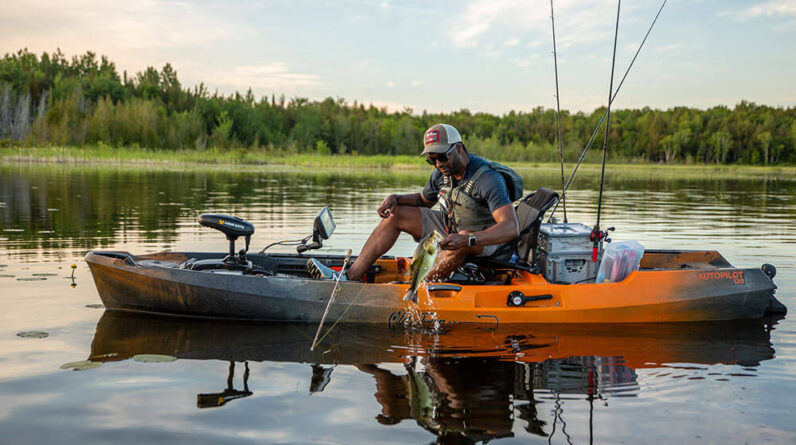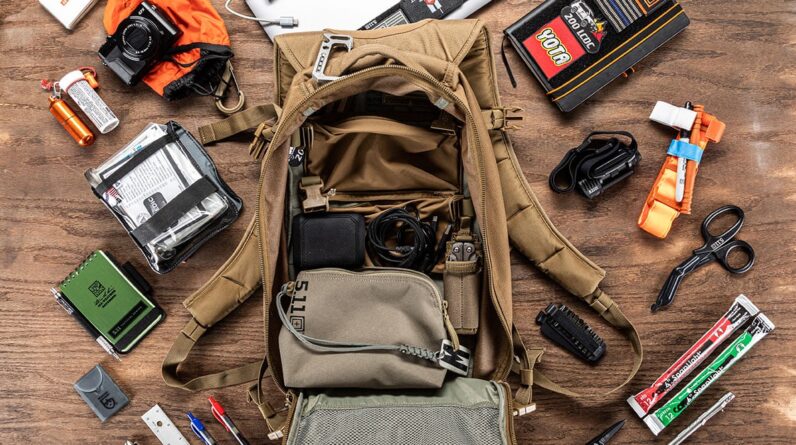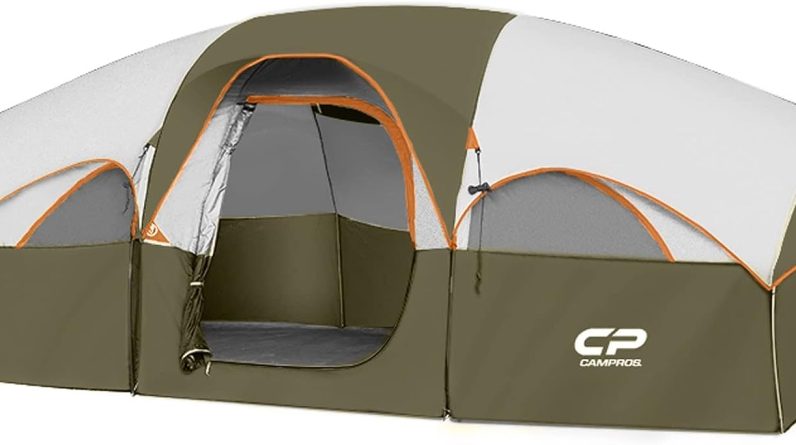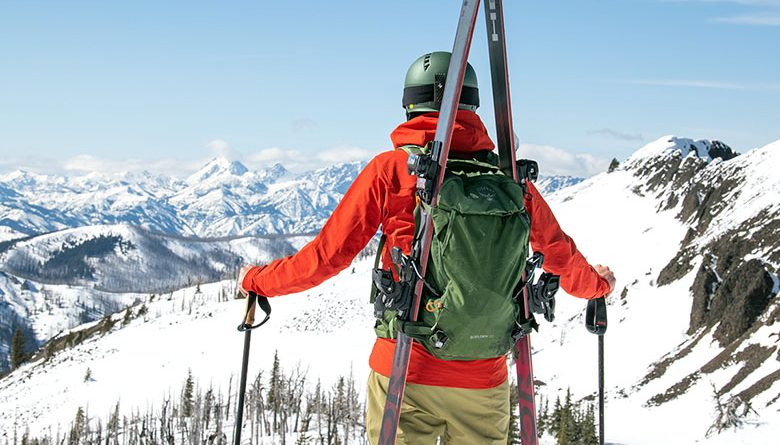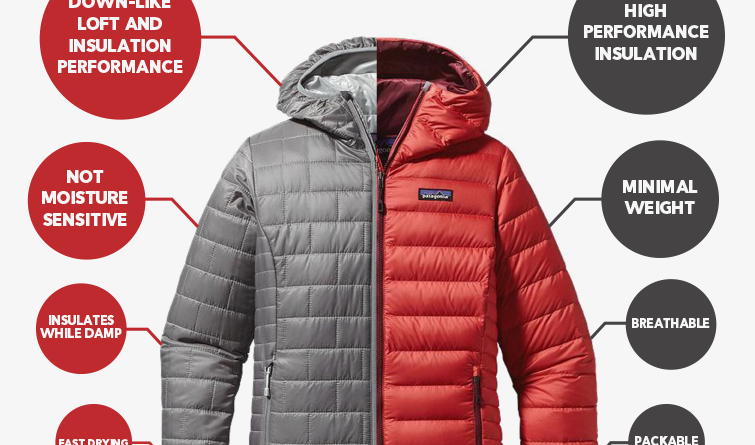
Have you ever wondered what sets down and synthetic insulation apart when it comes to sleeping bags? With so many options out there, it can be challenging to know which type is best for your outdoor adventures. Good news – we’ve got you covered! In this article, we’ll delve into the nuances of down and synthetic insulation, helping you make an informed decision about which one suits your needs and preferences.
Let’s start with down insulation. Picture fluffy feathers that provide incredible warmth and insulation. That’s down for you. This natural material is known for its exceptional warmth-to-weight ratio, making it ideal for cold weather conditions. However, keep in mind that down insulation may lose its effectiveness when wet. It also tends to be more expensive than synthetic options. If you’re looking for excellent warmth and don’t mind the price tag, down insulation might be the way to go.
Now, let’s talk about synthetic insulation. This type of insulation is made from artificial fibers designed to mimic the properties of down. One of the most significant advantages of synthetic insulation is its ability to retain warmth even when wet. Plus, it dries quickly. Synthetic sleeping bags are also generally more affordable than those filled with down. However, they may not provide the same level of warmth as down insulation. If you prioritize durability, affordability, and versatility, synthetic insulation might be the right choice for you.
Ready to dive deeper into the realm of down and synthetic insulation? In our comprehensive article, we’ll explore the pros and cons of each type, provide tips on choosing the right insulation for your needs, and debunk common myths. By the end, you’ll have all the knowledge you need to make an informed decision and enjoy a cozy night’s sleep under the stars. Stay tuned! When it comes to choosing the right insulation for your sleeping bag, it’s important to understand the differences between down and synthetic insulation. Both options have their own set of benefits and drawbacks, so it ultimately comes down to personal preference and specific needs. In this article, we’ll delve into the characteristics of down and synthetic insulation, as well as the key differences between the two. By the end, you’ll have a clearer understanding of which type of insulation is right for you.
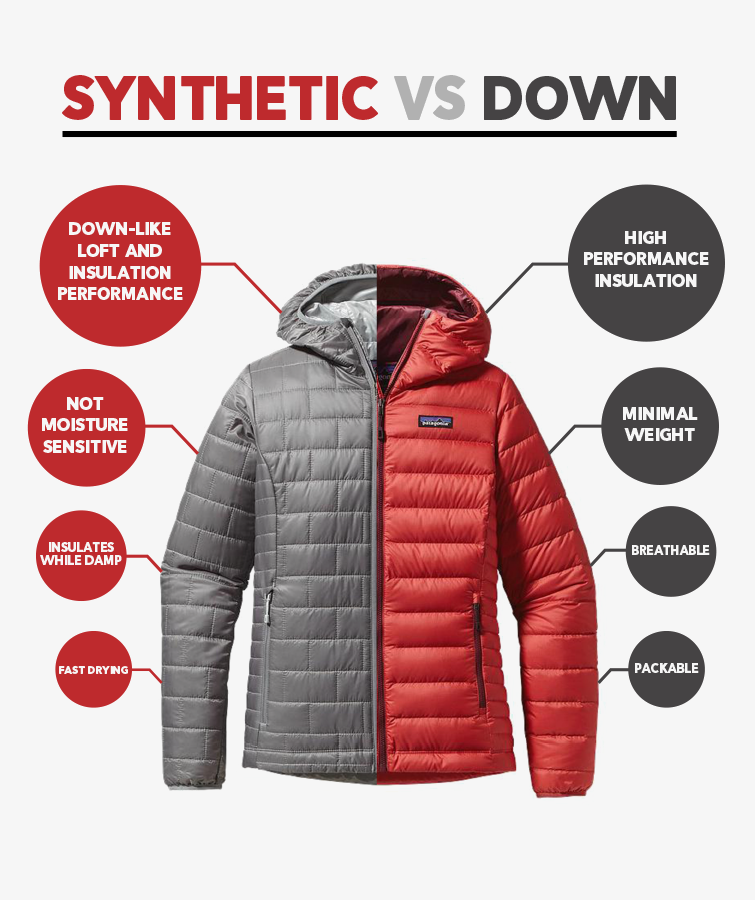
This image is property of www.activedsm.com.
Types of Insulation
Before we dive into the specifics of down and synthetic insulation, let’s first define what each type is.
Down Insulation
Down insulation is derived from the soft feathers found underneath the tough exterior feathers of waterfowl, such as ducks and geese. These feathers create an insulating layer that traps heat, providing warmth and comfort.
Synthetic Insulation
Synthetic insulation, on the other hand, is made from artificial materials, such as polyester fibers. These fibers are designed to mimic the insulating properties of natural down, providing warmth even when wet.
Now that we have a basic understanding of down and synthetic insulation, let’s explore each type in more detail.
Down Insulation
What is Down Insulation?
Down insulation is prized for its supreme warmth-to-weight ratio. The unique structure of down feathers allows them to trap air and create a layer of insulation that effectively retains body heat. This means that down sleeping bags can provide exceptional warmth without the added bulk.
Benefits of Down Insulation
One of the main advantages of down insulation is its superior warmth. Down sleeping bags are known for their ability to provide excellent insulation in cold temperatures. Additionally, down is incredibly lightweight and compressible, making it ideal for backpacking or any activity where weight and packability are key considerations.
Drawbacks of Down Insulation
While down insulation offers numerous benefits, it does have a few drawbacks. One of the main concerns with down is its susceptibility to moisture. When wet, down clumps together and loses its insulating properties, resulting in a significant decrease in warmth. Additionally, down sleeping bags tend to be more expensive than their synthetic counterparts.

This image is property of blog.citrus-lime.com.
Synthetic Insulation
What is Synthetic Insulation?
Synthetic insulation is designed to mimic the insulating properties of down while offering some additional benefits. Made from polyester fibers, synthetic insulation is generally more affordable and easier to care for than down insulation.
Benefits of Synthetic Insulation
One of the biggest advantages of synthetic insulation is its ability to retain warmth even when wet. Unlike down, synthetic fibers do not clump together when exposed to moisture, allowing them to maintain their insulating properties. Synthetic sleeping bags also tend to be more affordable than down sleeping bags, making them a budget-friendly option for many outdoor enthusiasts.
Drawbacks of Synthetic Insulation
Although synthetic insulation has its advantages, it does come with a few drawbacks. Synthetic sleeping bags tend to be heavier and less compressible than down sleeping bags, making them bulkier to pack and carry. Additionally, synthetic insulation is generally less durable than down, meaning that it may not last as long with regular use.
Key Differences Between Down and Synthetic Insulation
Weight and Packability
One of the main differences between down and synthetic insulation is their weight and packability. Down sleeping bags are incredibly lightweight and compressible, making them the ideal choice for backpackers and those looking to minimize weight and bulk in their gear. On the other hand, synthetic sleeping bags tend to be bulkier and heavier, especially when packed down.
Warmth and Temperature Rating
In terms of warmth, down insulation is widely regarded as superior. Down’s ability to trap air and create a layer of insulation results in excellent warmth retention, even in extremely cold temperatures. Synthetic insulation, while still providing warmth, generally cannot match the insulating properties of down in extreme conditions.
Moisture Resistance
When it comes to moisture resistance, synthetic insulation has the upper hand. Synthetic fibers do not clump together when wet, allowing them to retain their insulating properties even in damp conditions. On the other hand, down insulation loses its ability to retain heat when exposed to moisture, making it less effective in wet environments.
Durability
While both down and synthetic insulation can provide long-lasting performance with proper care, down insulation has a reputation for being more durable. The natural resilience and resilience of down feathers allow them to withstand regular use and maintain their loft for a longer period. Synthetic insulation, while durable, may compress and lose its loft over time.
Cost
Cost is often a significant factor when choosing between down and synthetic insulation. Down sleeping bags tend to be more expensive than synthetic sleeping bags due to the higher cost of sourcing and processing the natural down feathers. Synthetic sleeping bags, on the other hand, are generally more affordable and accessible to a wider range of budgets.
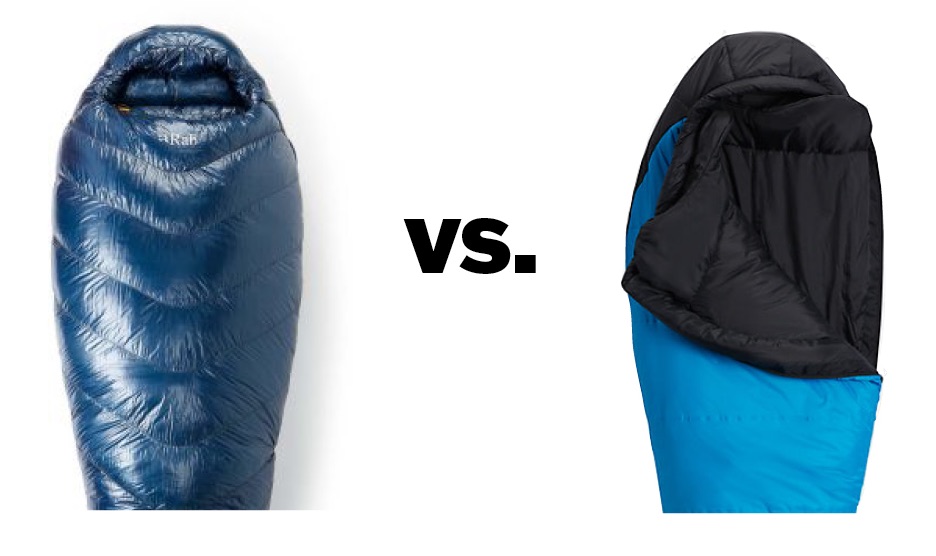
This image is property of trekandmountain.com.
Which Insulation is Right for You?
Considerations for Choosing Insulation
When deciding between down and synthetic insulation, there are several factors to consider. Firstly, think about the specific conditions in which you’ll be using your sleeping bag. If you frequently camp in wet environments or expect your gear to get wet, synthetic insulation may be the better choice due to its moisture resistance. Additionally, consider the weight and packability of the sleeping bag. If you prioritize lightweight and compressible gear, down insulation may be the way to go.
Different Sleeping Bag Applications
Different sleeping bag applications may also influence your insulation choice. For backpacking or ultralight trips where weight and packability are crucial, down insulation is often preferred. On the other hand, if you primarily use your sleeping bag for car camping or where weight isn’t a concern, synthetic insulation may be a more suitable and cost-effective option.
Personal Preferences
Ultimately, personal preferences play a significant role in the decision-making process. Some individuals may prefer the luxurious warmth and lightweight feel of down insulation, while others prioritize the affordability and moisture resistance of synthetic insulation. Take into account your priorities and preferences when making your final decision.
Caring and Cleaning Sleeping Bags
Caring for Down Insulation Sleeping Bags
Caring for a down insulation sleeping bag requires some special considerations. Firstly, it’s important to store your down sleeping bag in a breathable, protective storage sack to prevent compression and maintain its loft. When it comes to cleaning, follow the manufacturer’s instructions carefully. Down sleeping bags often require specific detergents and gentle washing techniques to preserve the natural oils in the feathers.
Caring for Synthetic Insulation Sleeping Bags
Synthetic insulation sleeping bags are generally easier to care for. It’s recommended to store your synthetic sleeping bag in a large, breathable sack to maintain its loft and prevent compression. When it comes to cleaning, synthetic sleeping bags can often be machine washed using a gentle cycle and mild detergent. Be sure to follow the manufacturer’s instructions for best results.
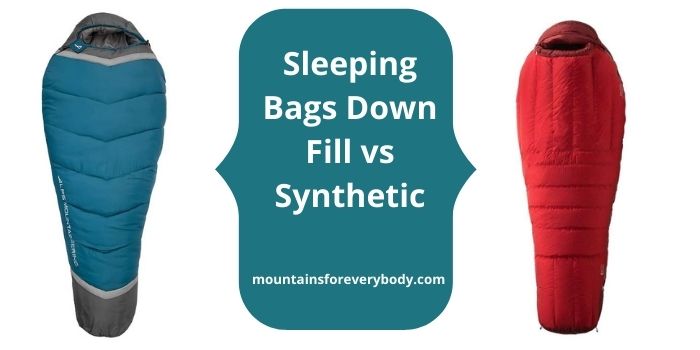
This image is property of mountainsforeverybody.com.
Environmental Impact
Down Insulation Environmental Impact
The sourcing and processing of down feathers for insulation have raised some environmental concerns. Poorly regulated down sourcing practices have resulted in animal welfare issues in the past, making it essential to choose down products from companies committed to ethical sourcing and transparency. In recent years, many outdoor brands have taken steps to ensure responsible down sourcing.
Synthetic Insulation Environmental Impact
While synthetic insulation doesn’t raise the same animal welfare concerns as down, it does have its own environmental impacts. The production of synthetic fibers requires the use of fossil fuels and other non-renewable resources. Additionally, synthetic materials take much longer to biodegrade, resulting in greater waste accumulation in landfills. However, advancements in recycling and eco-friendly synthetic materials are helping to reduce the environmental footprint of synthetic insulation.
Conclusion
Understanding the distinction between down and synthetic insulation for sleeping bags is crucial in making an informed decision. Consider factors such as weight, warmth, moisture resistance, durability, cost, and personal preferences when choosing the right insulation for your needs. Remember to care for your sleeping bag properly to ensure its longevity and consider the environmental impacts of your choice. Whether you opt for the luxurious warmth of down or the practicality of synthetic insulation, a well-insulated sleeping bag will keep you cozy and comfortable on your outdoor adventures.
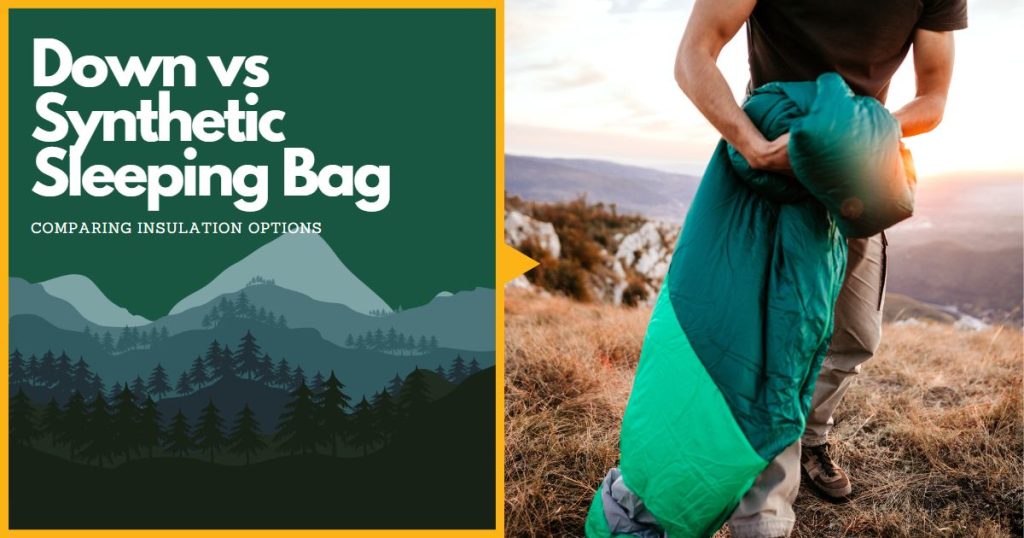
This image is property of i0.wp.com.

